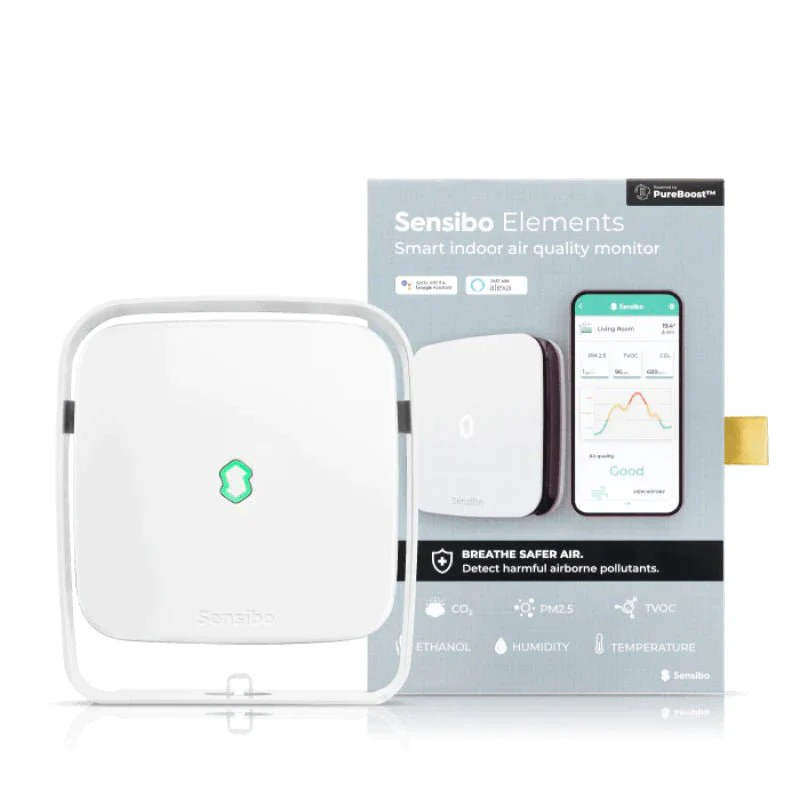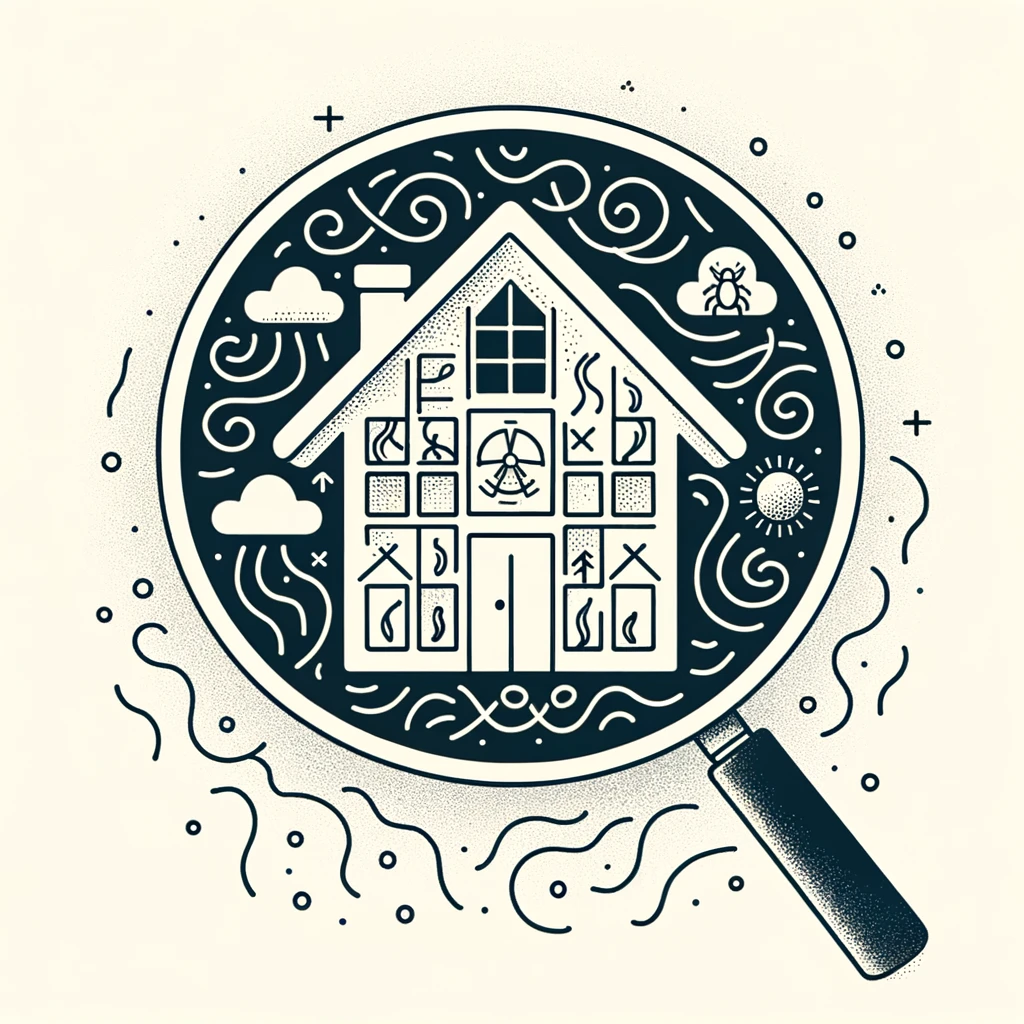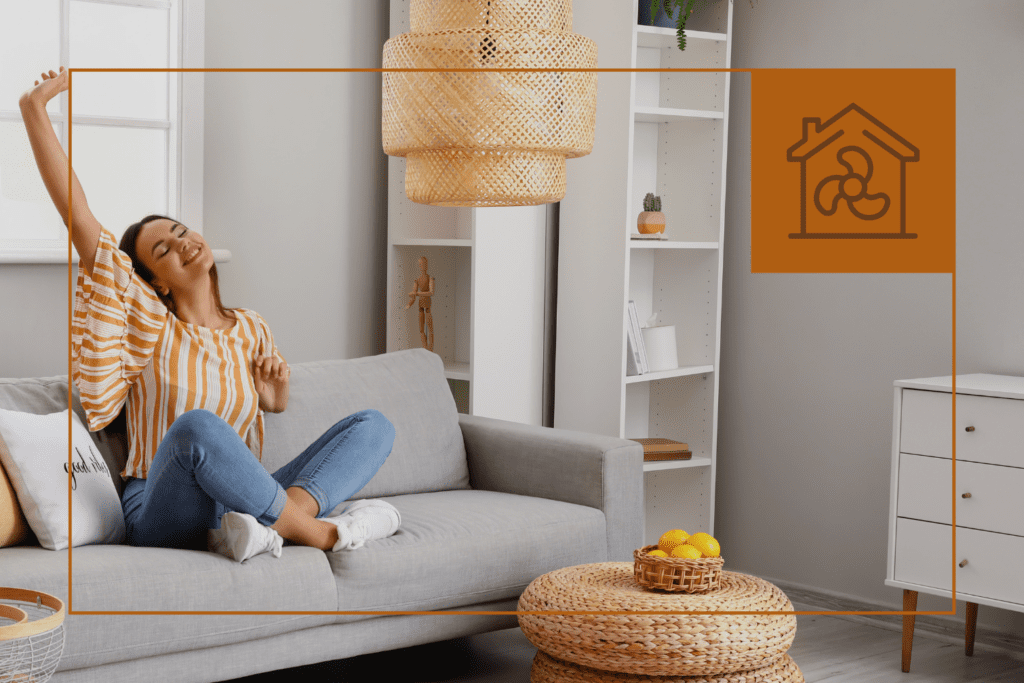In a 2014 Weatherization Assistance Program survey, there was a 48% reduction in individuals self-reporting “not good” physical health and a 48% reduction in the number of self-reported poor mental health days.
How can weatherization efforts—that is steps to tighten a home’s building envelope, reduce air leakage and increase energy savings—result in better occupant health? Is there such a thing as healthy energy-efficient homes? Let’s find out.
What Makes A Healthy Home?
A healthy home is designed and maintained to promote occupants’ physical, mental and emotional health. Typical healthy home characteristics include safe and comfortable indoor temperatures, smoke and carbon monoxide alarms, adequate lighting, good ventilation rates and improved indoor air quality, to name a few.
 More: How do official “healthy home” definitions compare to the general consensus of what defines healthy housing? Read here →
More: How do official “healthy home” definitions compare to the general consensus of what defines healthy housing? Read here →While the term might seem basic, the broader concept of healthy housing signifies a distinct shift in the way we view the housing-human health relationship.
A healthy home goes beyond simply protecting occupants from injury and illness, but actually promotes and supports occupant health.
What Makes An Energy-Efficient Home?
Energy efficiency simply means using less energy to perform the same task. Likewise, an energy-efficient home is designed to create a comfortable indoor environment for occupants while minimizing energy consumption.
While energy efficiency is a key component of green building practices, sustainable construction and high-performance homes, the terms are not interchangeable (despite the fact that they are often used that way!).
Nevertheless, there are a handful of specific building design characteristics that are widely accepted as energy-efficient buildings. These include a tightly sealed building envelope, efficient insulation, controlled ventilation, a properly-sized HVAC system, high-efficiency appliances and energy-efficient windows and doors.
The Relationship Between Energy Efficiency and Indoor Air Quality
How does residential energy efficiency efforts improve occupant health, even if it’s not the primary motivation of the work? Energy-efficient homes can also be healthy homes because they have improved indoor air quality and thermal comfort.
Common energy-efficient measures ultimately create a healthier indoor environment with fewer pollutants, pests, allergens and asthma triggers, in addition to better moisture control and improved temperature regulation.
Despite this consensus among experts, there is a general misunderstanding about the relationship between energy efficiency and indoor air quality. Or rather, the idea that an energy-efficient home cannot also be a healthy home.
Prioritizing energy savings and prioritizing occupant health are often seen as competing interests. (As discussed in this recent Harvard Business Review article and this Forbes article.) But this presumed opposition is false. Energy-efficient homes can also be healthy homes.
There are a handful of system upgrades, solutions and strategies that simultaneously reduce a building’s energy consumption and improve occupant health.
History of Energy Efficiency and IAQ as Competing Ideas
Where does the confusion lie? Here is our quickest, slightly oversimplified, definitely not an in-depth historical context summary.
It all starts with the 1970s energy crisis. With oil embargos and geopolitical energy shortages, the government sought out quick solutions to reduce energy needs.
The top solution, that ultimately changed American housing for the rest of the century, was to increase building airtightness. AKA quite literally tightening the home’s building envelope to reduce air leakage and keep that expensive conditioned air inside, resulting in less energy use.
This made fresh air ventilation the enemy.
 More: Wait, what does build tight ventilate right mean? Or better yet, what’s a building envelope? We break down this IEQ basic here →
More: Wait, what does build tight ventilate right mean? Or better yet, what’s a building envelope? We break down this IEQ basic here →But with that construction shift came a disastrous unintended consequence: less natural ventilation meant higher indoor pollution levels and increased occupant exposure.
Reuniting Energy Efficiency and Ventilation
This brings us to a very important caveat: pursuing energy upgrades without considering the increased airtightness and pursuing countermeasures to ensure adequate ventilation and air exchange can harm occupant health. Meaning, not only can it be energy-efficient and healthy but it must be energy-efficient and healthy homes.
The resulting new mantra became build tight and ventilate right. Now, not only would buildings increase airtightness, but they would also pursue enhanced ventilation.
However, bringing in more outdoor air requires-you guessed it-energy. To make matters worse, buildings remain one of the top energy consumption sectors in the U.S. All of which seems to fly in the face of necessary reduced carbon footprints and reduced energy consumption in the face of worsening climate instability.
While this contradiction is true, the fact that increasing ventilation increases energy use is where many people’s awareness and assumptions end. When, in reality, there are solutions out there that minimize energy usage while increasing outdoor air ventilation.
All of this to say … the race is on to reunite energy-efficiency and healthy indoor air as sympatico ideas.
Reuniting Energy Efficiency and IAQ
To put all confusion to rest, let’s consider the EPA’s Healthy Indoor Environment Protocols for Home Energy Upgrades publication.
In the very first paragraph of the guide, it explicitly states “Integrated healthy home and energy-efficient retrofit activities can simultaneously lower utility costs and improve indoor air quality.”
But what is the key word there? Integrated.
Energy-efficient measures with little regard for human health can backfire as can healthy home pursuits without energy-efficient measures. Hence, the essential warning included only a few sentences after, that it’s important to conduct a thorough assessment of the home before pursuing work and make sure to take both goals into consideration.
How To Make Healthy Homes Energy-Efficient
So, how do you make a healthy home energy-efficient? And vice versa, how do you ensure that an energy-efficient home is also a healthy home? Let’s review a handful of energy-efficient and healthy home intervention options that reduce energy consumption and make homes healthier for occupants, in an integrated fashion.
| Focus | Actions | Indoor Environment Effects | Health Benefits |
|---|---|---|---|
| Increased airtightness | – Insulation – Air sealing – Tighter windows and doors | – Improves indoor temperatures – Reduces dampness and moisture issues – Reduces intruding pests – Reduces incoming air pollutants – Reduces radon and soil gas intrusion | – Improves respiratory symptoms – Reduces asthma and COPD symptoms – Reduces allergens and sinus infections – Reduces radon-related cancer risks – Reduces extreme heat- and cold-related deaths and illness – Less hypertension, meaning less heart disease |
| Improved ventilation | – Vent combustion devices directly outdoors – Adding or upgrading localized ventilation systems to reduce pollutants in high-polluting rooms – Installing a whole-home ventilation system, specifically with energy recovery, to bring in more fresh air | – Reduces number of indoor air pollutants and particulates in circulation – Reduces excess moisture and dampness | – Improves respiratory symptoms – Reduces asthma and COPD symptoms – Less hypertension – Less fatigue – Fewer headaches |
| HVAC system upgrades | – Installing a properly-sized HVAC system – Upgrading to a more energy-efficient system | – Reduces particulates and indoor air pollutants | – Improves respiratory symptoms |
| Cooking appliances | – Vent appliances directly to the outdoors – Installing more energy-efficient appliances – Opting for electric appliances over gas and/or wood sources | – Reduces particulates and indoor air pollutants | – Improves respiratory symptoms |
| Safety measures | – Install smoke alarms – Install CO alarms | – Prevents excessive smoke and CO exposure | – Reduces chances of death or illness caused by smoke and CO exposure |
| Building materials | – Option to swap out current building materials with new healthier materials | – Reduces exposure to VOCs and other indoor air pollutants | – Improves respiratory symptoms – Reduces chances of formaldehyde-related cancer risk |
The above actions are a mixture of source control, filtration and ventilation.
Health improvements resulting from energy-efficiency retrofits are greatest among vulnerable groups—that is populations like children, the elderly and those with pre-existing health conditions.
In addition, another overall benefit is reduced financial hardship and stress related to high energy bills, leading to improved mental health.
Creating Healthy Energy Efficient Homes
What’s next? We suggest taking a closer look at where your house or indoor space could benefit from energy-efficiency upgrades.
One best practice to keep in mind before retrofits is that prioritizing the whole home as a connected system leads to better health benefits than honing in on single issues.
In fact, according to a DOE report about home energy performance upgrades and the related health effects, existing research and evidence are strongly in favor of whole-house ventilation upgrades and solutions.
All in all, choosing to pursue energy efficiency options in your home is a simultaneous choice to create a healthier indoor living environment.





